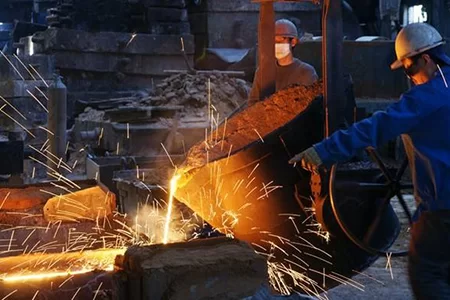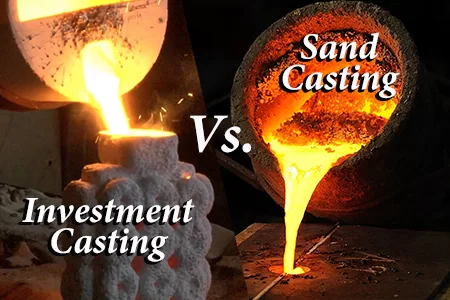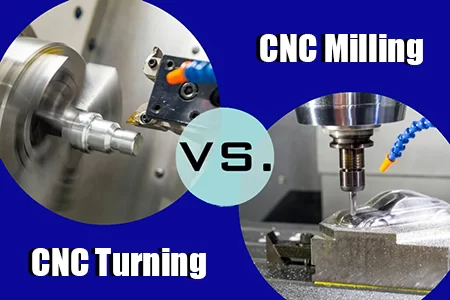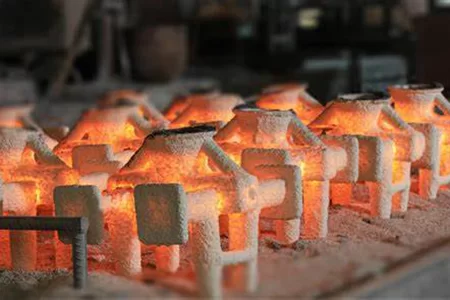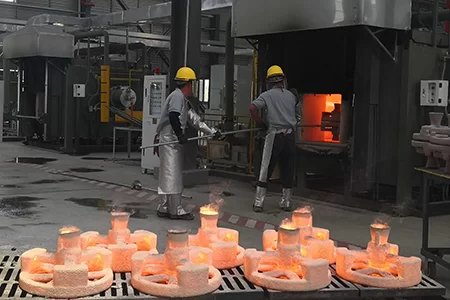
How Casting Manufacturers Can Elevate the Quality of Casting Products?
-
Home>
-
Blog>
-
Technology>
How Casting Manufacturers Can Elevate the Quality of Casting Products?
In the highly competitive landscape of the metal casting industry, the quality of casting products stands as the cornerstone for the success and sustainability of casting manufacturers. Exceptional casting quality not only ensures customer satisfaction but also enhances brand reputation, opens up new market opportunities, and drives long-term business growth. This article delves deep into the multifaceted strategies and approaches that casting manufacturers can adopt to elevate the quality of their casting products, covering various aspects from quality control systems to technological advancements.
Establishing a Robust Quality Control System
Raw Material Inspection
The journey towards high-quality casting products begins with the selection and inspection of raw materials. High-purity metals and alloys are the building blocks of superior castings. Casting manufacturers should establish strict sourcing criteria and partnerships with reliable suppliers. For example, when dealing with ferrous metals, ensuring the iron and steel meet specific chemical composition and impurity level requirements is crucial. Advanced analytical techniques such as Spectroscopy can be employed to precisely analyze the chemical composition of raw materials. This helps in detecting any potential contaminants that could affect the mechanical properties of the final casting, such as sulfur and phosphorus in steel, which can cause brittleness. Regular audits of suppliers' production processes and quality control measures further guarantee the consistency of raw material quality.
Process Monitoring and Control
The casting process is a complex sequence of operations, and each step needs to be carefully monitored and controlled. From melting and pouring to solidification and post-processing, variations in parameters can lead to defects in the casting. Real-time monitoring systems, such as temperature sensors, flow meters, and pressure gauges, should be installed at critical points in the production line. For instance, in the sand casting process, monitoring the temperature of the molten metal during pouring is essential. If the temperature is too high, it may cause excessive oxidation and porosity, while too low a temperature can lead to incomplete filling of the mold. By continuously collecting and analyzing data from these sensors, manufacturers can make immediate adjustments to maintain optimal process conditions. Statistical Process Control (SPC) techniques can also be utilized to detect trends and variations in the process, enabling proactive corrective actions.
In-process and Final Inspection
In-process inspection is a vital step in preventing defective products from reaching the later stages of production. Non-destructive testing (NDT) methods like X-ray radiography, ultrasonic testing, and magnetic particle inspection are commonly used to detect internal and surface defects in castings without damaging them. These techniques can identify issues such as cracks, porosity, and inclusions early on, allowing for timely repairs or rework. After the casting is fully processed, a comprehensive final inspection is necessary. This includes dimensional inspections using coordinate measuring machines (CMMs) to ensure that the casting meets the design specifications in terms of size and shape. Mechanical property tests, such as tensile strength, hardness, and impact resistance tests, are also conducted to verify that the casting has the required performance characteristics.
Technological Advancements for Quality Enhancement
Advanced Casting Processes
Investing in advanced casting processes can significantly improve the quality of casting products. For example, precision casting techniques like investment casting and lost-foam casting offer higher dimensional accuracy and surface finish compared to traditional sand casting. Investment casting, also known as precision casting, involves creating a wax pattern, coating it with a ceramic shell, melting out the wax, and then pouring molten metal into the shell. This process is ideal for producing complex-shaped components with tight tolerances, such as aerospace engine parts. Lost-foam casting, on the other hand, uses a polystyrene foam pattern that is vaporized during the pouring of molten metal, eliminating the need for mold removal and reducing the risk of casting defects.
Simulation and Modeling
Computer-aided engineering (CAE) tools, including casting simulation software, have revolutionized the casting industry. These tools allow manufacturers to simulate the entire casting process virtually, from mold filling to solidification. By inputting parameters such as material properties, mold design, and process conditions, manufacturers can predict potential defects, such as shrinkage cavities, cold shuts, and solidification cracks, before actual production. This enables them to optimize the mold design, adjust process parameters, and select the most suitable materials, thereby reducing the likelihood of defects in the physical casting. For example, simulation can help determine the best gating and riser system design to ensure proper metal flow and feeding during solidification, minimizing the occurrence of porosity.
Automation and Robotics
Automation and robotics play a crucial role in improving the consistency and precision of the casting process. Automated pouring systems can accurately control the amount and speed of molten metal pouring, reducing human error and variations. Robots can be used for tasks such as mold assembly, core setting, and part handling, ensuring repeatability and high-quality workmanship. In addition, automated inspection systems equipped with machine vision technology can quickly and accurately detect surface defects on castings, improving the efficiency and accuracy of the inspection process. This not only enhances the quality of casting products but also increases production productivity.
Personnel Training and Management
Skilled Workforce Development
A skilled and well-trained workforce is essential for producing high-quality casting products. Casting manufacturers should invest in comprehensive training programs for their employees, covering various aspects of the casting process, from raw material handling to quality control. Training can include theoretical courses on metallurgy, casting principles, and process optimization, as well as practical hands-on training on operating casting equipment and using inspection tools. For example, employees involved in the melting process should be trained to understand the effects of different melting parameters on the quality of molten metal. By continuously upgrading the skills of their workforce, manufacturers can ensure that employees are capable of handling complex casting operations and identifying potential quality issues.
Quality-Oriented Culture
Fostering a quality-oriented culture within the organization is equally important. All employees, from production workers to management, should be committed to quality and understand their role in the quality-control process. Quality goals should be clearly defined and communicated throughout the company, and employees should be encouraged to take ownership of quality issues. Incentive programs can be implemented to reward employees who contribute to quality improvement, such as reducing defect rates or suggesting process enhancements. Regular quality meetings and feedback sessions can also be held to discuss quality-related issues, share best practices, and promote continuous improvement.
Supply Chain Management and Collaboration
Supplier Collaboration
Maintaining strong relationships with suppliers is not only about raw material quality but also about collaborative innovation. Casting manufacturers should work closely with their suppliers to develop new materials and alloys that meet specific quality requirements. For example, in the automotive industry, where lightweight and high-strength castings are in high demand, manufacturers can collaborate with material suppliers to develop new aluminum alloys with improved mechanical properties. Sharing technical knowledge and production data with suppliers can also help them better understand the casting process requirements, enabling them to provide more suitable raw materials and support in resolving quality-related issues.
Customer Feedback Integration
Listening to customer feedback is a valuable source of information for quality improvement. Casting manufacturers should establish effective channels for collecting customer feedback, such as surveys, customer service hotlines, and on-site visits. Analyzing customer complaints and suggestions can help identify areas where the casting product quality can be enhanced. For example, if customers frequently report issues with the surface finish of a particular casting, the manufacturer can focus on improving the finishing processes, such as machining, grinding, or polishing. By integrating customer feedback into the quality-improvement process, manufacturers can
In conclusion, elevating the quality of casting products is a continuous and comprehensive effort that requires the integration of various strategies. Casting manufacturers need to establish a robust quality control system, embrace technological advancements, invest in personnel training and management, and optimize supply chain management. By implementing these measures, casting manufacturers can produce high-quality casting products that not only meet the strictest industry standards but also give them a competitive edge in the global market. Whether it's through advanced casting services, state-of-the-art casting processes, or a commitment to continuous quality improvement, the pursuit of excellence in casting product quality is the key to long-term success in the metal casting industry.
At Hulk Metal, as a distinguished and professional casting manufacturer, we wholeheartedly embrace these principles. By rigorously implementing a robust quality control system, staying at the forefront of technological advancements, nurturing a highly skilled workforce, and optimizing our supply chain through close collaboration, we are dedicated to maximizing the quality of our casting products. Our unwavering commitment is to meet and surpass customer satisfaction standards, delivering casting solutions that not only adhere to the strictest industry norms but also provide tangible value and reliability to our clients. If you need to customize any castings, welcome to contact us.
Article Navigation
Article Navigation
Industries
Foundries
-

May.26, 2025
How Much Do You Know About the Types of Metal Casting Processes?
READ MORE
-

May.07, 2025
Investment Casting vs. Sand Casting: Which Process Suits Your Project Best?
READ MORE
-

April.14, 2025
CNC Milling vs. CNC Turning: Unraveling the Key Differences for Your Project
READ MORE
-

March.03, 2025
Addressing Defects in Castings: A Comprehensive Guide
READ MORE
-

February.25, 2025
How to Compare Product Quality Between Different Casting Foundries?
READ MORE



